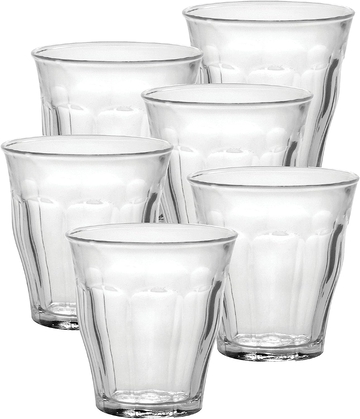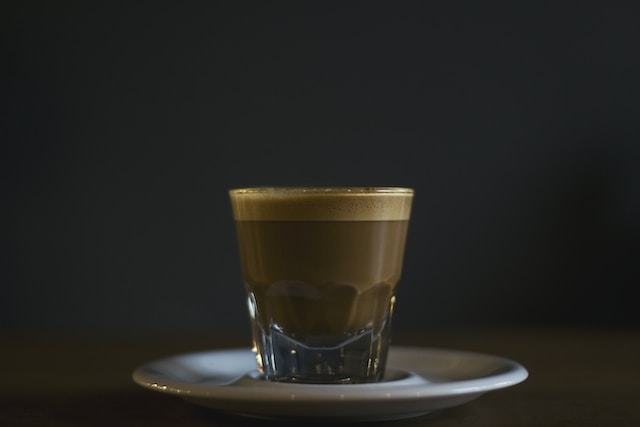Cortado Vs. Cappuccino: Differences & Recipes
As a coffee enthusiast, there’s nothing quite like exploring the world of coffee beverages and discovering the nuanced differences that make each one unique. Before delving into the realm of home coffee brewing, I didn’t even know what a Cortado is, today it’s one of my favorites at home. However, as I almost don’t drink latte, I have lots of cappuccinos, make them for my wife and whenever I’m out, I order a cappuccino.
Let’s discover the origins of each beverage, and later look into the differences and similarities.
Origins of Cortado and Cappuccino
The Cortado has its origins in Spain, where the word “cortar” translates to “cut” or “shortened”, reflecting the drink’s essence - a harmonious balance between robust espresso and just the right amount of milk. The outcome is oh-so-delicious, this is definitely one of my favorite drinks today.
The cappuccino, on the other hand, has its roots embedded in Italy, the birthplace of espresso. Its name is believed to be inspired by the Capuchin friars, whose brown robes resemble the drink’s rich, dark hue. The cappuccino we adore today traces its origins back to the espresso culture of Italy, where the pursuit of crafting impeccable coffee is a cherished tradition. With its equal parts espresso, steamed milk, and milk foam, the cappuccino embodies the artistry and passion that define Italian coffee culture.
The cappuccino, a beloved espresso-based coffee drink with Italian origins, has a rich history that spans centuries. Its name, “cappuccino,” is derived from the Capuchin friars and their distinctive brown robes, reminiscent of the drink’s color when milk is added to it. Although the exact birthplace of the cappuccino is debated, it is believed to have evolved from coffee houses in Trieste and other Italian regions during the early 20th century. However, intriguingly, historical documents suggest the existence of a black coffee drink mixed with milk bearing the name “cappuccino” in 19th-century Central Italy.
The modern cappuccino as we know it, featuring equal parts espresso, steamed milk, and milk foam, gained popularity outside Italy in the 30s of the last century, and later spread worldwide. Today, cappuccino remains an iconic espresso beverage renowned for its harmonious blend of rich coffee and velvety milk foam, a testament to the enduring artistry of Italian coffee culture and its evolution over time.
Let’s look at some of the differences between the two.
Cortado vs. Cappuccino taste
The taste profiles of the cortado and cappuccino are where the journey diverges. The cortado, with its balanced blend of espresso and milk, delivers a harmonious fusion of rich, and bold coffee notes and creamy milkiness. In contrast, the cappuccino leans towards the sweeter and creamier side due to its equal parts of espresso, steamed milk, and milk foam.
Espresso To Water Ratio
The ratio of espresso to milk plays a significant role in distinguishing these drinks. A cortado is characterized by a ratio of 1 to 1.5 ounces of espresso and frothed milk, creating a beverage that highlights the espresso’s intensity. Meanwhile, the cappuccino showcases a 1:1:1 ratio, where the espresso, steamed milk, and milk foam coalesce into a harmonious trifecta of flavors.
Cortado Milk Ratio:
One of the challenges imposed by Cortado’s ratio is the low volume of milk, which requires the smallest milk pitcher and practice. Don’t be too disappointed if you’re getting too much microfoam, it’ll taste great nonetheless.
I find it more comfortable to froth milk for my cortado in a small pitcher to have a similar experience when I’m frothing milk for a cappuccino.

small pitcher for cortado and macchiato, 8oz milk pitcher is the perfect volume
Cappuccino Ratio
As mentioned above, the cappuccino ratio is made with 3 equal parts of espresso, milk and microfoam. In personal experience, the cappuccino is much sweeter, the microfoam creates another sensation and overall a different experience compared to drinking a cortado.
Due to the standard volume of milk, you can use most milk pitchers, I use a 500 ml (16 oz) pitcher and it’s perfect for cappuccinos.
Drink Volume
Cup size matters, too. A cortado is typically served in a compact 3 to 4-ounce cup, allowing you to savor its concentrated flavors without overwhelming your senses. In contrast, the cappuccino claims a slightly larger 4 to 6-ounce cup, providing room for the espresso’s depth to intertwine with the velvety milk components.
I think I have read somewhere online that Spaniards sip through the Cortado slowly. Unfortunately, I can’t do that. I finish my drinks pretty quickly, especially in the morning. Sometimes, when I host and serve several drinks to guests, I might make myself a drink in between and devour it (sorry), haha.
My favorite cups for cappuccinos are 150 ml and 180 ml by Loveramics. We also have a set of notNeutral cups and they are great, too!
I can’t find the cup I have for my cortados, but my next purchase will be a set of Duralex Picardie which is used in a local cafe that I really like. They aren’t as beautiful and decorative as notNeutral and Loveramics, but they are simple, solid and transparent which is also nice.

Duralex Picardie are simple, solid, transparent, and affordable coffee cups available in different sizes to suit all your beverage and coffee needs
How To Make A Perfect Cappuccino: A Stepped How-To Recipe
- Brew a shot of espresso using your preferred method.
- Steam an equal amount of milk to your espresso shot until it’s velvety and smooth.
- Gently pour the steamed milk over the espresso shot, holding back the microfoam with a spoon.
- (Optional): With your spoon, add a generous layer of milk foam on top.
- Dust the foam with cocoa powder for a delightful finishing touch.
- Enjoy your creamy and sweet cappuccino!
How To Make A Cortado: A Stepped How-To Recipe
- Extract 1 to 1.5 ounces (28-40 ml) of espresso.
- Froth an equal amount of milk to your espresso shot until it’s velvety and has a creamy consistency.
- Gently pour the frothed milk into the espresso, aiming for an even blend. Latte art is only a bonus, not a must!
- Admire the contrast between the espresso and milk while knowing that simplicity often holds the most profound pleasures.
- Indulge in the balanced flavors and aromas of your expertly crafted cortado.
In the intricate world of coffee, every brew tells a unique story. The cortado and cappuccino are no exception, each weaving a tale of origin, taste, and preparation that resonates with coffee aficionados around the world. Whether you’re drawn to the bold harmony of the cortado or the sweet indulgence of the cappuccino, your coffee journey is enriched by understanding and savoring these delightful differences.

